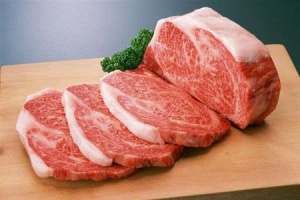New video on our channel: Horse Meat. Yellow Fat Isn't Scary! The #1 Diet Meat. Health Benefits and Kazakh Traditions

Horse MEAT is the number one dietary meat : it's beneficial for children, adults, and the elderly, and reduces the risk of heart disease, diabetes, and dementia. Controlled slaughter, carcass cutting, and expert opinions ensure that
horse meat is not only a traditional dish but also a scientifically proven product with HEALTH benefits.
In this video, we examine in detail the value of horse meat as a unique food product and demonstrate the test slaughter of three horses, followed by the butchering of the carcasses. Scientists and specialists discuss the nutritional value, health benefits, and characteristics of meat from different breeds.
Horse meat has a balanced composition: rich in proteins and amino acids, vitamins, trace elements, and low cholesterol. it is suitable for children and people with allergies, and helps strengthen the immune system. It also plays a significant role in the prevention of cardiovascular disease, diabetes, dementia, Alzheimer's, and Parkinson's.
Experts explain the differences between stallion and mare fat, how to properly evaluate a carcass, and why yellow fat is not an indicator of old meat.
The topic of selecting and evaluating meat at the market is discussed separately. Fat and muscle can be used to distinguish pastured from stable-raised meat, hooves can be used to determine whether the cattle has been fattened, and the fiber structure can be used to determine whether the meat is young or old.
It is emphasized that yellow fat does not always indicate an old animal —the yellow tint is due to pasture grass. If the animal has been pastured for a year and a half or two, the yellow color is preserved, along with its nutrients.
Carcass weighings revealed a weight of approximately 193–205 kg. Three stallions of similar age and housing conditions, selected for control slaughter at 30 months, were compared. Experts noted the uniform distribution of glacial fat and the presence of flaky fat, which is essential in the production of kazy. Kazy, zhaya, and zhal are produced without grading and are considered the most valuable parts.
The video shows a cut along the backbone into two halves. The saw is cooled with water, the platform is lowered with a pedal, then the shoulder is separated. The first six ribs are used for the shoulder, and the remaining ribs are used for the kazy. These practical details of butchering and sorting carcasses are important for understanding how meat is processed into various national products.
⚡️In this video you will learn:
✔️Why horse meat is considered the best dietary meat in the world
✔️What are the benefits of proteins, amino acids and healthy cholesterol in horse meat
✔️How horse meat prevents heart disease, diabetes and aging
✔️Are there any differences between the carcasses of a stallion, a mare and castrated animals
✔️Is yellow fat on the carcass old horse meat or an animal from fattening?
✔️What parts of the carcass are used for kazy, zhal, zhaya and other national products
✔️How to determine the conditions of keeping a horse by the muscles and hooves
✔️What is glazed and layered fat and its importance for kazy
✔️How a carcass is divided into halves and individual cuts
✔️Why kazy, zhaya and zhal are considered delicacies regardless of variety separation
Read together with it:
- Низкое предложение и устойчивый спрос: в Аргентине растут цены на мясоЦены на говядину снова выросли, что отразилось на полках супермаркетов и в мясных магазинах. За последние две недели розничные цены выросли на 8–12%, а на некоторые популярные отрубы рост превысил 15% по сравнению с октябрем. Тем не менее, продажи остаются высокими: потребители продолжают покупать, принимая новые цены и закрепляя тенденцию, которая повторяется каждый год в конце года, когда спрос ...
- Колумбия: При экспорте скота сертификация и прослеживаемость больше не являются необязательнымиВысококачественное животноводство, особенно при экспорте, требует сертификации и прослеживаемости. Это необходимые условия для выхода и конкуренции на многих международных рынках, а также на некоторых всё более требовательных внутренних рынках. Колумбийское животноводство не является исключением из этих правил, и, хотя предстоит ещё многое сделать, всё большее число ферм и компаний внедряют эти ме...
- Смоленская область — лидер России по производству крольчатиныВ интервью «Агроэксперту» заместитель председателя регионального правительства Алексей Кучумов отметил, что регион достиг самодостаточности по таким продуктам, как яйца, мясо и картофель, превышая уровень 100%. Кроме того, Смоленская область занимает первое место по посевным площадям льна, а также активно развивает молочное животноводство, с общим поголовьем более 1......
- Wild boar meat: a sustainable solution for pest controlThis problem isn't unique to our region or country. As veterinarian and specialist Ignacio Zeledon explained, "Where there's water, there are pigs." And the truth is, its spread is noticeable worldwide and represents one of the world's most complex environmental and economic challenges. The wild boar (Sus scrofa) is an invasive alien species, listed among the 1......
- Производство мяса птицы в Новосибирской области увеличилось на 10%Это на 9,7% (или 5,4 тысячи тонн) больше, чем в аналогичном периоде 2024 года, как сообщает Новосибирскстат. Регион занимает второе место по объему производства мяса птицы в Сибирском федеральном округе, уступая лишь Алтайскому краю. Новосибирская область составляет почти 20% от общего производства в округе. Основным продуктом является замороженное мясо сельскохозяйственной птицы, составляющее 5.....


